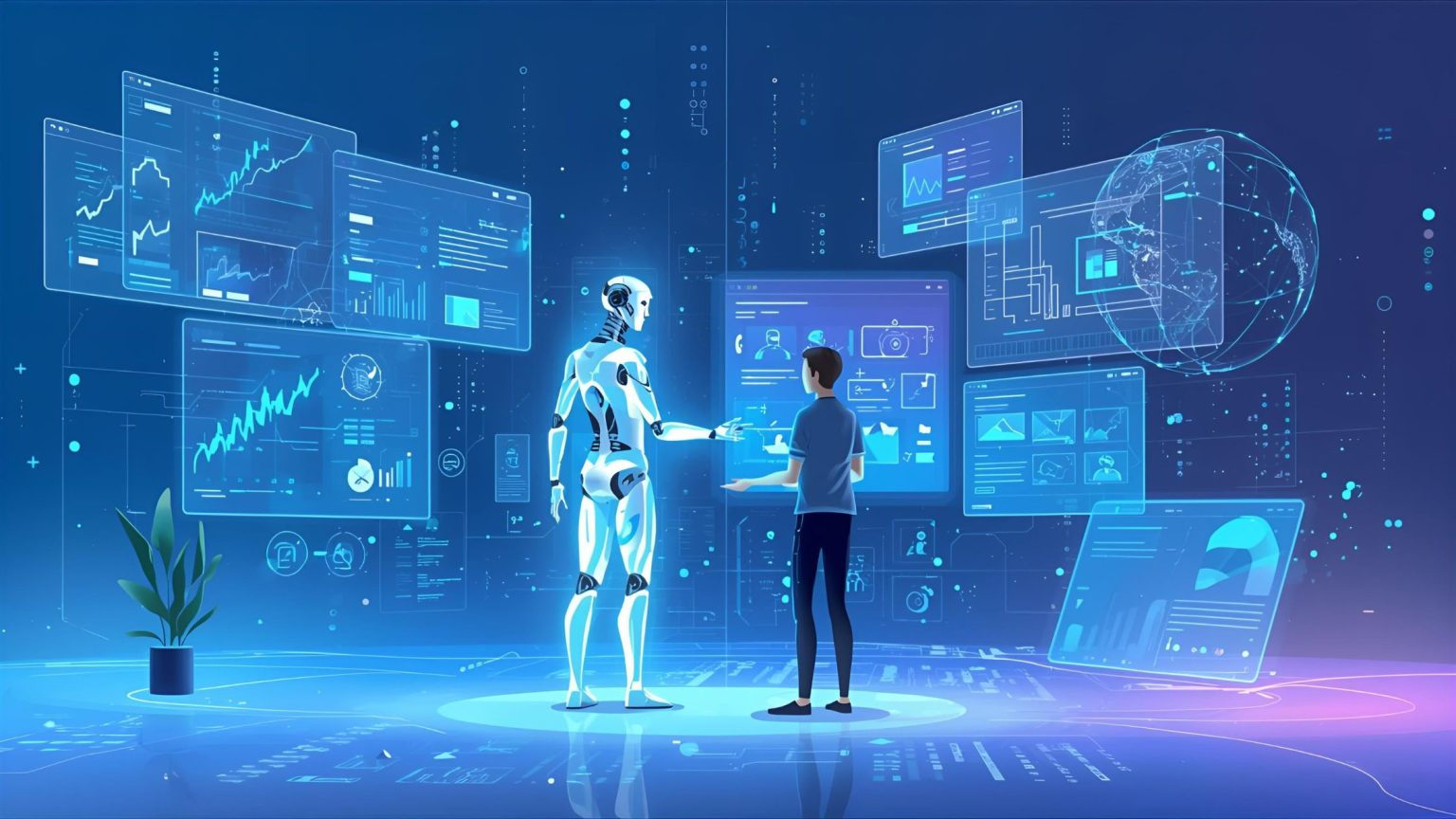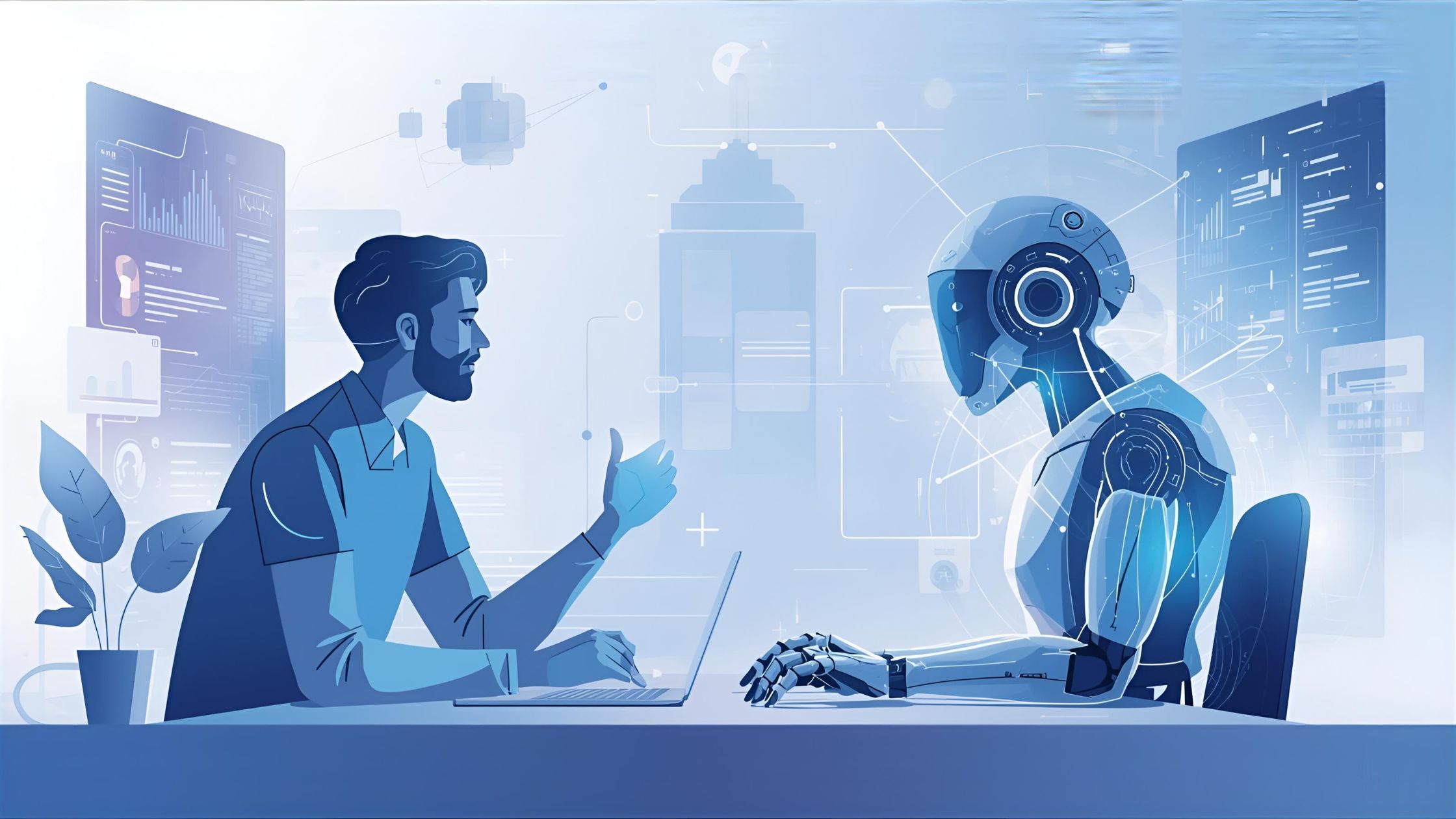
How AI is Changing the Future of Web Design
- noviyanto
- /
- 10 November 2025
- /
- web design
Table of Contents

Table of Contents
If you’re a business owner, a designer, or a developer, you’ve likely felt this shift. The conversation has moved from “What if?” to “What now?” How is AI in web design transforming our workflows, our creativity, and the very nature of user experience?
This article dives deep into the present and future of artificial intelligence in website design. We’ll explore the groundbreaking tools, the automation of complex tasks, and the incredible new possibilities for personalization. More importantly, we’ll answer the big question: What does this mean for the future of human designers?
What Exactly is AI in Web Design? (And Why It's a Game-Changer)
At its core, AI in web design refers to the use of artificial intelligence and machine learning algorithms to assist in or automate the creation, execution, and optimization of websites.
This isn’t just about a smarter “Save” button. It’s about systems that can:
- Understand design principles (layout, color theory, typography).
- Analyze massive datasets of user behavior.
- Generate code, content, and even entire design mockups from a simple text prompt.
- Adapt a website’s interface in real-time for each individual user.
For years, web design has been a meticulous, manual process. AI introduces the power of automation and data-driven insight at a scale we’ve never seen before, turning it from a static craft into a dynamic, intelligent process.
Donec condimentum sed orci vel aliquet. Nam venenatis nisi ut urna condimentum, non facilisis orci molestie. Curabitur vel sodales felis. Nam in purus elit. Morbi nisl leo, sagittis interdum malesuada eu, tempor at turpis. Aenean ac mauris eget magna sodales blandit. Aenean mattis id dui a mollis.
Nunc ultrices porta dui nec vehicula. Nullam commodo vel eros eu efficitur. Pellentesque ullamcorper mauris eget sollicitudin tempus. Phasellus pulvinar, elit sed ullamcorper accumsan, lectus tortor tempor leo, ac tincidunt augue tortor eget enim.
The New Creative Workflow: How AI is Revolutionizing the Design Process

The most immediate impact of AI is on the day-to-day workflow of designers and developers. Repetitive tasks are being automated, freeing up human creators to focus on what they do best: strategy, empathy, and complex problem-solving.
From Idea to Prototype in Minutes with AI Design Automation
Imagine sketching a rough wireframe on a napkin, taking a photo, and having an AI instantly convert it into a fully-functional, coded prototype. That technology is already here.
AI design automation is tackling the most time-consuming parts of the process:
- Generative Design: AI algorithms can generate hundreds of layout, logo, or color palette variations in seconds, allowing designers to explore creative avenues that would have been impossible to manually create.
- Sketch-to-Code: Tools like Uizard can take hand-drawn sketches or static screenshots and transform them into interactive mockups and even front-end code. This drastically shortens the gap between initial concept and testable product.
- Smart Layouts: Instead of manually adjusting every element for 10 different screen sizes, AI-powered tools understand the relationship between components. A designer can add a new card to a grid, and the entire layout intelligently reflows and adapts, maintaining perfect spacing and alignment.
Intelligent Code Generation and Development
For developers, AI acts as the ultimate “pair programmer.” Tools like GitHub Copilot (powered by OpenAI) analyze the context of your code and suggest entire functions, not just single lines.
But it’s moving beyond code assistance to code generation. Framer AI, for example, allows you to write a plain English prompt like, “Create a sticky header with a logo, three navigation links, and a CTA button,” and the tool generates the responsive component instantly. This bridges the gap between design and development, allowing for faster iteration and pixel-perfect translation of design intent.
AI-Powered Content and Visuals
A beautiful design is empty without compelling content. AI is stepping in here, too.
Copywriting: Tools like ChatGPT and Jasper can draft website copy, headlines, product descriptions, and blog posts. While it still needs a human editor’s touch for nuance and brand voice, it eliminates the “blank page” problem.
Image Generation: Services like Midjourney and DALL-E 3 can create stunning, completely unique hero images, icons, and illustrations from a text description, freeing designers from the limitations of stock photography.
Top AI Web Design Tools You Need to Know
The ecosystem of AI web design tools is exploding. While hundreds exist, a few platforms are leading the charge and demonstrating AI’s tangible power.
-
Wix ADI (Artificial Design Intelligence): This is one of the earliest and most popular examples. Users answer a few questions about their business, target audience, and style preferences. The AI then instantly generates a complete, unique website with relevant text and images. It’s AI design for the masses.
-
Framer AI: As mentioned, Framer is blurring the lines between a design tool and a web builder. Its AI capabilities allow you-to-generate and iterate on responsive websites using simple text prompts, making it a favorite for high-fidelity prototyping and fast deployment.
-
Uizard: This tool’s magic is in its “AI design assistant.” It can turn sketches into prototypes, generate design themes from a single image or URL (instantly “cloning” a style for a new mockup), and create components from text prompts.
-
Relume: This AI-powered tool is a secret weapon for agencies. It generates entire sitemaps and wireframes in seconds. You can type in a business description (e.g., “A subscription box for eco-friendly dog toys”), and it will build a logical site structure and low-fidelity wireframes for every key page, saving dozens of hours in the discovery and planning phase.
Beyond the Build: Machine Learning for UX and Personalization
Perhaps the most profound impact of machine learning for UX isn’t just in building the site, but in running it. AI is powering a new generation of user experiences that are truly personal and adaptive.
Hyper-Personalization: The One-Size-Fits-One Web
For decades, the web has been a “one-size-fits-all” medium. Everyone who visited a homepage saw the exact same content. AI changes that.
By analyzing user behavior, location, time of day, and past interactions, AI can reconfigure a website in real-time for each individual visitor.
An e-commerce site can show a “New Arrivals” banner to a returning customer but a “10% Off First Purchase” banner to a new visitor.
A media site like Netflix can re-order its entire library to showcase titles it knows you’ll be interested in.
A B2B site can change its case studies and testimonials to match the industry of the visitor, making its value proposition instantly more relevant.
Smarter A/B Testing and User Analytics
A/B testing used to be a slow process. You’d set up two variations (A and B), run the test for weeks, and analyze the results.
AI-driven platforms can run “multivariate” tests on dozens of variations (different headlines, button colors, layouts) simultaneously. The AI identifies which combinations are performing best and automatically starts funneling more traffic to the winning designs, optimizing the site while the test is still running.
Furthermore, AI can analyze heatmaps and session recordings to identify user frustration points—like “rage clicks” or confusing navigation—and suggest specific design changes to fix them.
The Big Question: Will AI Replace Web Designers?

This is the number one question on every designer’s mind. The short answer is no. The longer, more accurate answer is:
No, AI will not replace web designers. But web designers who use AI will replace those who don’t.
AI is a tool—an incredibly powerful copilot, but still a tool. It excels at automation, data analysis, and variation. It does not excel at:
Empathy: Understanding a client’s true business goal or a user’s unspoken frustration.
Strategy: Asking “why” we are building this site and for whom.
Complex Problem-Solving: Navigating ambiguous feedback and stakeholder politics.
True Creativity: AI is brilliant at remixing what it has learned, but it cannot (yet) produce a truly novel design concept born from a unique human experience.
The role of the web designer is evolving. It’s shifting away from being a “pixel-pusher” who manually adjusts spacing and exports assets. It’s evolving into a Design Strategist, an AI Prompter, and an Experience Architect. The designer of the future guides the AI, curates its output, and focuses on the high-level strategy and human-centric thinking that AI cannot replicate.
The Future of Web Design with AI: What's Next?
The future of web design with AI is accelerating. Here’s a glimpse of what’s on the horizon:
Predictive Design: AI won’t just react to users; it will anticipate their needs. Imagine a website that pre-loads the “Contact” page just as you’re thinking about looking for it, based on your mouse movements.
Voice-Powered Design: As VUI (Voice User Interface) becomes more sophisticated, AI will be essential for designing “headless” web experiences where the primary interaction is through conversation, not clicks.
Self-Optimizing Websites: In the near future, you won’t just “launch” a website. You’ll deploy a system that constantly tests, learns, and evolves itself to maximize conversions, improve readability, and adapt to new user behaviors, all without direct human intervention.
Conclusion: Embrace the AI Revolution with a Human-First Partner
AI in web design is not a trend to be feared; it’s a new frontier to be explored. It offers the power to build more creative, efficient, and deeply personal web experiences than ever before. It automates the tedious, allowing us to amplify the human.
But technology alone is not the answer. The most successful websites of the future will be those that find the perfect balance between cutting-edge AI and expert human strategy.
Ready to build a future-proof website that leverages the best of AI without losing the human touch?
At Folkastudio, we combine state-of-the-art technology with deep design expertise. We use AI to accelerate workflows and uncover data insights, so our team can focus on what truly matters: your business goals and your users’ needs.
Contact Folkastudio today to discuss your project, and let’s build the future of the web together.

Website Developer & Digital Marketing
Helping businesses grow with websites and digital marketing to get more leads/sales.
